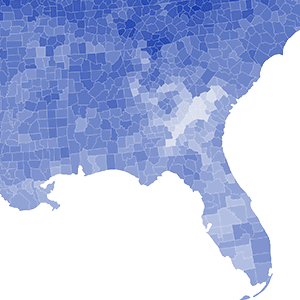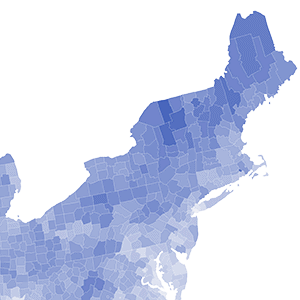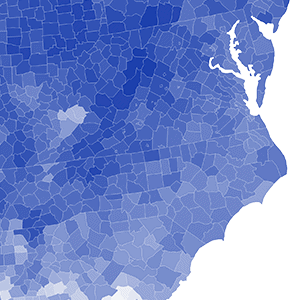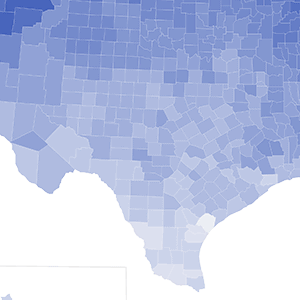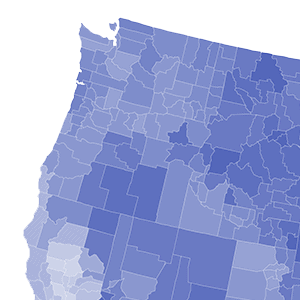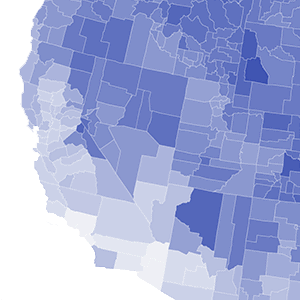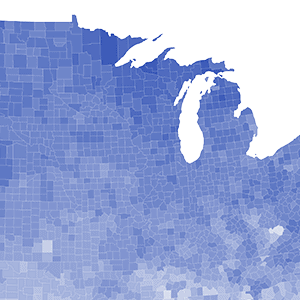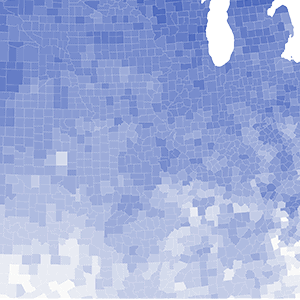HOW WEATHER AFFECTS AIR BARRIER INSTALLATIONs IN THE rocky mountain region
The moisture and temperature limitations of some air barriers can each be problematic enough on their own. But the combination of the two, can wreak havoc a construction schedule.
The impact of moisture and temperature on the construction schedule
Percentage of days with either 0.1" of precipitation or temperatures below 40°F in the past year.
The combination of moisture and temperature takes its toll on construction sites in the Midwest
We looked at data from across the country to see how many days out of the year have either 0.1" of precipitation or has a temperature that reaches 40°F or lower (see below on why that temperature limit is important). Here is what it looks like from throughout the Rocky Mountain region.
- Air barrier installations in cities in the Rocky Mountain region are impacted by moisture and temperature an average of 61% of the year.
- There is only one county in all of Idaho, Montana, Wyoming, Colorado, and Utah that has less than 50% of their year affected by either temperature or moisture limitations. In the southwesternmost corner of Utah, along the border with Arizona, Washington County is only affected by the weather conditions 42% of the year (at the time of writing).
- For some comparisons to different regions around the country, Denver (56% at the time of writing) is similar to Portland, Oregon (55%), Boise (58%) is similar to Boston (58%), and Salt Lake City (52%) is similar to Nashville (52%).
Most air barriers have low temperature limitations that aren't that low
What to look out for
Many air barriers like this acrylic emulsion air barrier state that the product should not be applied when temperatures are below 40°F.

To avoid temperature limitations
PROSOCO's FastFlash system is a complete, monolithic building envelope system that can be applied even in temperatures below 32° F.
The impact of temps below 40° on the construction schedule
Percentage of days with temperatures below 40° in the past year
Most air barriers cannot be installed in wet conditions
What to look out for
Traditional air barrier chemistry, like acrylic emulsion technology, is made to keep water out when fully cured. But any introduction of moisture into the process before the air barrier is fully cured can cause lots of problems. Here is a common statement from acrylic emulsion air barrier literature stating that not only can they not be installed in wet conditions but cannot be installed if there is a chance of rain in the forecast. If it does happen to rain within the 16-hour window listed on the technical data sheet below, the air barrier can literally wash right off the wall.

To avoid moisture limitations
PROSOCO's FastFlash system is a complete, monolithic building envelope system that can be applied in damp conditions and it is immediately waterproof so it can withstand rain right after application.
The impact of moisture on the construction schedule
Percentage of days with at least 0.1" of precipitation in the past year
Most air barriers cannot be applied to damp surfaces
What to look out for
Watch out for air barriers that can only be applied on a dry substrates. In reality, if an air barrier can only be applied in dry weather conditions to completely dry substrates, you may have to wait several days or even several weeks to make sure everything the substrates are dry, current conditions are dry and the forecast is dry as well.

To avoid moisture limitations
PROSOCO's Fast Flash system is a complete, monolithic building envelope system that can be applied in damp conditions and it is immediately waterproof so it can withstand rain right after application.
All the data we analyzed shows that the combination of temperature and moisture limitations of many air barriers can add up to big problems.
